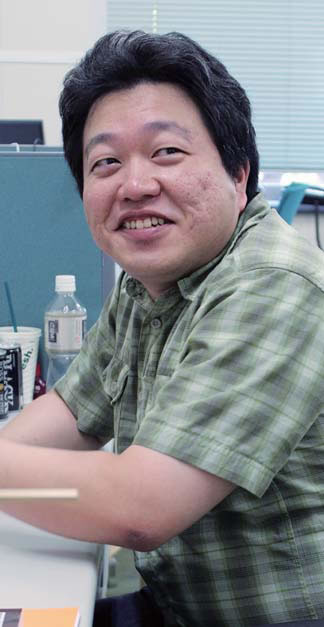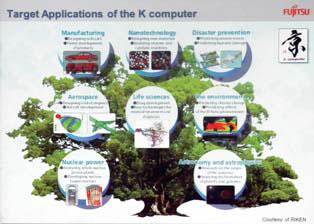|

Haruhiko Matsuo
Project Researcher
Graduate School of Engineering,
the University of Tokyo
|
The International Supercomputing Conference (ISC) '11 was held June 19~23 in Hamburg, Germany. Haruhiko Matsuo attended the conference and experienced for himself the transition from the K Computer to exascale supercomputers that is already underway on the front lines of computer science throughout the world.
The ISC is the world’s largest international conference and exhibition devoted to supercomputing, storage and networks. Held annually since 1986, the event features the announcement of one of the two annual updates to the Top 500 rankings. I attended this year’s conference because, as a researcher, I wanted to investigate the worldwide trends in this field.
The first day had a festival eve atmosphere and featured tutorials, workshops and the like. From the second day on, the main event was held. As in the case of a regular academic conference, it consisted of an international conference plus an exhibition. However, the conference was characterized by the participation of many top-level high-performance computing (HPC) vendors such as NVIDIA and SGI as presenters, giving it a strong business color as opposed to an academic atmosphere. Because it was not skewed to the academic side of things, I felt it gave attendees a glimpse of the actual supercomputers that will appear in the near future.
On the first day, I attended an MPI / OpenMP hybrid programming tutorial. It was a high-level tutorial that afforded the opportunity to gain hands-on knowledge in hybrid programming. On the second day, the Top 500 ranking was announced, and I was surprised to hear that the K Computer had jumped to the number one position. In Japan, people tend to focus only on the flops value (a performance indicator consisting of how many times per second the computer can perform floating point number calculations). But it appears that it was features such as the low power consumption and long continuous running time that had a greater impact and resulted in the high evaluation.
On the third day, I was able to hear a debate on the exascale supercomputing environment between Dr. David Kirk of NVIDIA and Dr. Thomas Sterling, a giant in the field of parallel architecture. There were also various other interesting presentations, too numerous to mention.
 What impressed me most as a result of attending ISC’11 was the fact that next-generation supercomputing is already on the exascale level. Up until very recently, the K Computer was referred to as the next-generation supercomputer, so once again I was astonished at the rapidity of the generational transition in super - computing. Also, by being able to actually hear the voices of people from top supercomputer vendors and others near that level, I was able to get some solid leads in my investigation into what the trends in the world of supercomputers will be in the near future. What impressed me most as a result of attending ISC’11 was the fact that next-generation supercomputing is already on the exascale level. Up until very recently, the K Computer was referred to as the next-generation supercomputer, so once again I was astonished at the rapidity of the generational transition in super - computing. Also, by being able to actually hear the voices of people from top supercomputer vendors and others near that level, I was able to get some solid leads in my investigation into what the trends in the world of supercomputers will be in the near future.
|



 What impressed me most as a result of attending ISC’11 was the fact that next-generation supercomputing is already on the exascale level. Up until very recently, the K Computer was referred to as the next-generation supercomputer, so once again I was astonished at the rapidity of the generational transition in super - computing. Also, by being able to actually hear the voices of people from top supercomputer vendors and others near that level, I was able to get some solid leads in my investigation into what the trends in the world of supercomputers will be in the near future.
What impressed me most as a result of attending ISC’11 was the fact that next-generation supercomputing is already on the exascale level. Up until very recently, the K Computer was referred to as the next-generation supercomputer, so once again I was astonished at the rapidity of the generational transition in super - computing. Also, by being able to actually hear the voices of people from top supercomputer vendors and others near that level, I was able to get some solid leads in my investigation into what the trends in the world of supercomputers will be in the near future.

